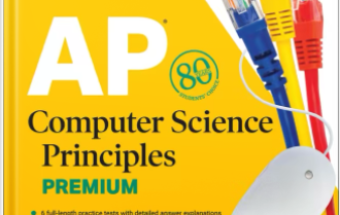Practice Exercises - Definite Integrals - AP Calculus Premium 2024
Practice Exercises
A1.
A2.
A3.
(A) –2
(B) 4
(C) –1
(D) 2
A4.
A5.
A6.
(A) 1
(B)
(C) –1
(D) 2
A7.
A8.
A9.
A10.
A11.
A12.
A13.
(A) –ln 2
(B)
(C)
(D) ln 2
A14. If we let x = 2 sin θ, then is equivalent to
A15.
(A)
(B) 1
(C)
(D) 0
A16.
*A17.
(A) –1
(B) e + 1
(C) 1
(D) e – 1
A18.
A19.
A20.
A21.
A22.
(A) e
(B) 2 + e
(C)
(D) 1 + e
A23.
(A) ln 2
(B) 1 + e
(C) –ln 2
(D)
A24. If we let x = tan θ, then is equivalent to
A25. If the substitution is used, then
is equivalent to
A26. The table above shows some values of continuous function f and its first derivative. Evaluate .
(A) –1/2
(B) 3
(C) 4
(D) –1
A27. Using a midpoint Riemann Sum with 3 equal width subintervals, find the approximate area of the shaded region above.
(A) 19
(B) 36
(C) 38
(D) 54
A28. The graph of a continuous function f passes through the points (4,2), (6,6), (7,5), and (10,8). Using trapezoids, we estimate that
(A) 30
(B) 32
(C) 33
(D) 41
A29. The area of the shaded region in the figure above is equal to ln 3. If we approximate ln 3 using both a left Riemann Sum and a right Riemann Sum with 2 equal width subintervals as shown, which inequality follows?
A30. Let . We estimate A using the L, R, and T approximations with n = 100 subintervals. Which is true?
(A) L < A < T < R
(B) L < T < A < R
(C) R < A < T < L
(D) R < T < A < L
A31.
A32.
A33. The average value of on its domain is
(A) 2
(B) 4
(C) 2π
(D) 4π
A34. The average value of cos x over the interval is
A35. The average value of csc2x over the interval from to
is
A36. Choose the Riemann Sum whose limit is the integral .
A37. Choose the Riemann Sum whose limit is the integral .
A38. Choose the integral that is the limit of the Riemann Sum
A39. is equal to
B1. Find the average value of function f, as shown in the graph below, on the interval [0,5].
(A) 4
(B) 5
(C) 7
(D) 8
B2. The integral gives the area of
(A) a circle of radius 4
(B) a semicircle of radius 4
(C) a quadrant of a circle of radius 4
(D) half of an ellipse
Use the graph of function f, shown below, for Questions B3–B6.
B3. Calculate the average value of f(x) on the interval [0,6]. Which of the following intervals contains x = c, where f(c) is the average value of f on [0,6]?
I. [0,2]
II. [2,4]
III. [4,6]
(A) I only
(B) II only
(C) III only
(D) I and II only
B4.
B5. Let ; then g′(1) =
(A) 3
(B) 4
(C) 6
(D) 8
B6. Let h(x) = x2 – f(x). Find .
(A) 38
(B) 58
(C) 70
(D) 74
B7. If f(x) is continuous on the closed interval [a,b], then there exists at least one number c, a < c < b, such that is equal to
(A)
(B) f′(c)(b – a)
(C) f(c)(b – a)
(D)
B8. If f(x) is continuous on the closed interval [a,b] and k is a constant, then is equal to
(A) k(b – a)
(B) k[f(b) – f(a)]
(C)
(D)
B9.
B10. If , then F′(u) is equal to
(A) –6u (2 – u2)2
(B) (2 – u2)3 – 1
(C) (2 – u2)3
(D) –2u (2 – u2)3
B11.
B12. If x = 4 cos θ and y = 3 sin θ, then is equivalent to
B13. A continuous function f takes on the values shown in the table below. Estimate using a left rectangular approximation with five subintervals.
(A) 144
(B) 170
(C) 186
(D) 196
B14. Find the value of x at which the function y = x2 reaches its average value on the interval [0,10].
(A) 5.313
(B) 5.774
(C) 6.083
(D) 18.257
B15. The average value of on the interval 0 ≤ x ≤ 5 is
(A) 6.25
(B) 6.41
(C) 9.2
(D) 10




